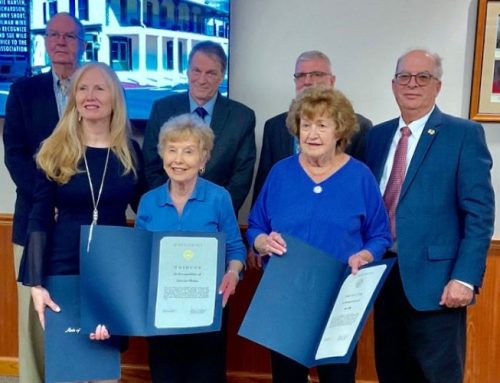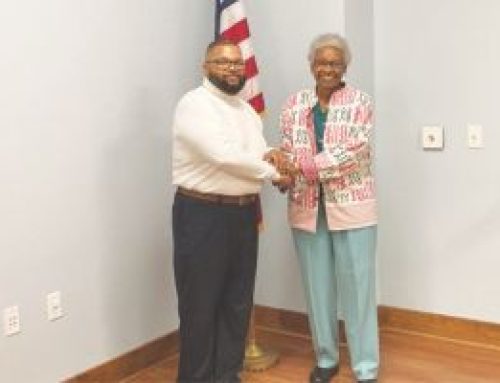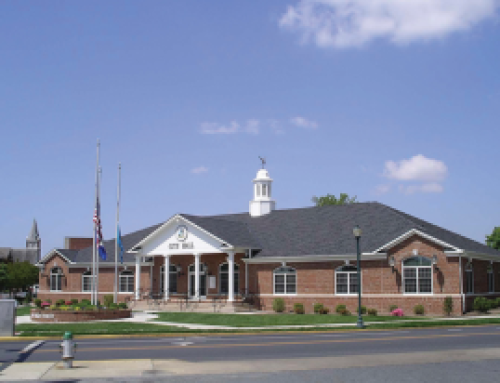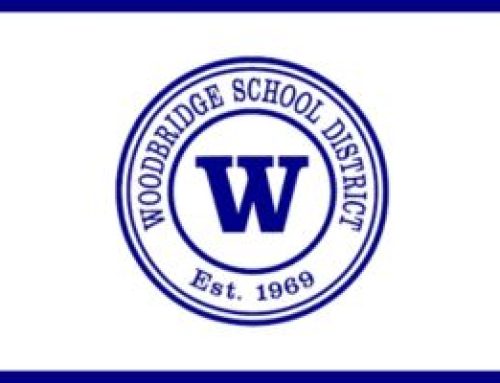Last Thursday, city of Seaford officials were joined by local legislators and other partners in the four phase Oyster House project for the opening of the first phase of the project, Oyster House Park. The park is located at the site of the former J.B. Robinson Oyster House, next to the Nanticoke River.
“We’re excited with what’s happening today in Seaford,” Seaford Mayor David Genshaw said in his opening remarks. “Without this community, things like this don’t happen.”

Seaford Mayor David Genshaw (center) is joined by representatives from the Chesapeake Conservancy and the Franklin P. and Arthur W. Perdue Foundation as well as U.S. Senator Tom Carper; state senators Dave Wilson, Brian Pettyjohn, and Bryant Richardson; state representative Danny Short; Sussex County Council President Mike Vincent; and other guests in cutting the ribbon for the Oyster House Park. Photo by Mike McClure
Following a thanksgiving prayer by Lenape Indian Tribe of Delaware Chief Dennis Coker, Genshaw spoke about the project, which started three years ago. “We had dreams of what this property could be,” he said of the oyster house property. “This project is just so important.”
The total project cost of first phase was $1.2 million, which was funded through a mix of private and public resources, including state transportation funding allocated by State Representative Daniel Short and State Senators Brian Pettyjohn and Bryant Richardson. Additional funding came from the Delaware Department of Natural Resources and Environmental Control, the Crystal Trust, Longwood Foundation, Franklin P. and Arthur W. Perdue Foundation, Welfare Foundation and REI.
“It’s a great opportunity to share what we love,” said Short, who fishes and hunts on the river.
“There’s a vision here that’s more than just a glimpse of the river,” Richardson added.
In 2018, Chesapeake Conservancy, a nonprofit based in Annapolis, purchased the Oyster House Park property, with the support of the Mt. Cuba Center, and donated the waterfront parcel to the city. Chesapeake Conservancy then worked with the city in a year-long public planning and comment period process to seek community input which was incorporated into a draft master plan for the Oyster House Park.
Genshaw credited Chesapeake Conservancy Board Chairman Randall Larrimore, the son of a former Seaford mayor, for negotiating the sale of the land. Larrimore’s organization works to save land around the Nanticoke River and promote the Nanticoke River.
“Despite where I lived in the world, I visited Seaford almost every year of my life,” said Larrimore, a 1965 Seaford graduate.
Larrimore said when he retired he wanted to do something to help Seaford, by providing greater access to the river. He hopes to raise funds to build a replica of the former oyster house and build an amphitheater nearby. Two oyster houses were on the J.B. Robinson property until the 1930s.
“Parks like this are the backbone of our communities,” Chesapeake Conservancy Executive Vice President Mark Conway added. “We have a unique opportunity to tell the story of Seaford’s cultural significance to residents and visitors.”
“We want to do everything we can to protect the region’s abundant resources,” said Dick Willey of the Franklin P. and Arthur W. Perdue Foundation.
In late February 2020, the Seaford Council approved a master plan calling for four stages of the park’s construction. Through resources raised by Chesapeake Conservancy, construction bid documents were designed and released in the summer of 2020, and Dissen & Juhn was chosen through a competitive bidding process for the first phase of the project.
Subsequent phases are planned to take place over five years, with each phase focused on providing benefits for the community that can be enjoyed immediately upon completion. These plans include:
Phase Two: A natural green amphitheater at the edge of the property that seats 75 people and an overflow of about 200 on the lawn. This will also serve as a community outdoor classroom, gathering space for performances and erosion control to address runoff from steep banks.
Phase Three: A structure that is a reimagination of the two Oyster Houses that were once on the site that will showcase sculpture, interpretive exhibits and provide meeting space. It will include the necessary public amenities such as parking and bathrooms, as well as a porch and garage door openings that will permit an unblocked view of the river from South Cannon Street.
Phase Four: Enhancing community emotional and spiritual connections through pedestrian access to the nearby prayer garden, a tribal ring for the Nanticoke Indians to practice traditional ceremonies by the river and a pavilion for shaded gatherings.
“The Nanticoke River is important to the western side of the county. We want to see it preserved,” Sussex County Council President Mike Vincent said during Thursday’s ceremony. Vincent recalled going to the oyster house with a neighbor when he was a boy and watching oysters being shucked.
“This is a great example of teamwork,” said U.S. Senator Tom Carper. State Senators Brian Pettyjohn and Dave Wilson were also on hand for the ceremony and ribbon cutting.
The park complements a significant number of other conservation projects along the Nanticoke River including the recently celebrated Nanticoke Crossing Park near the Woodland Ferry. Through partnerships with the United States Department of Defense Readiness and Environmental Protection Integration Program (REPI), the states of Maryland and Delaware, The Conservation Fund, The Nature Conservancy, Mt. Cuba Center, Lower Shore Land Trust, Sussex County Land Trust, Nanticoke River Watershed Conservancy, and others, Chesapeake Conservancy has helped conserve 3,050 acres in 21 projects across the corridor linking Vienna, MD, to Seaford. Significantly, these 21 projects link to other previously conserved properties and refuges, which creates 19,300 total acres of conserved land in the Nanticoke River watershed with a powerful impact on the environment.




